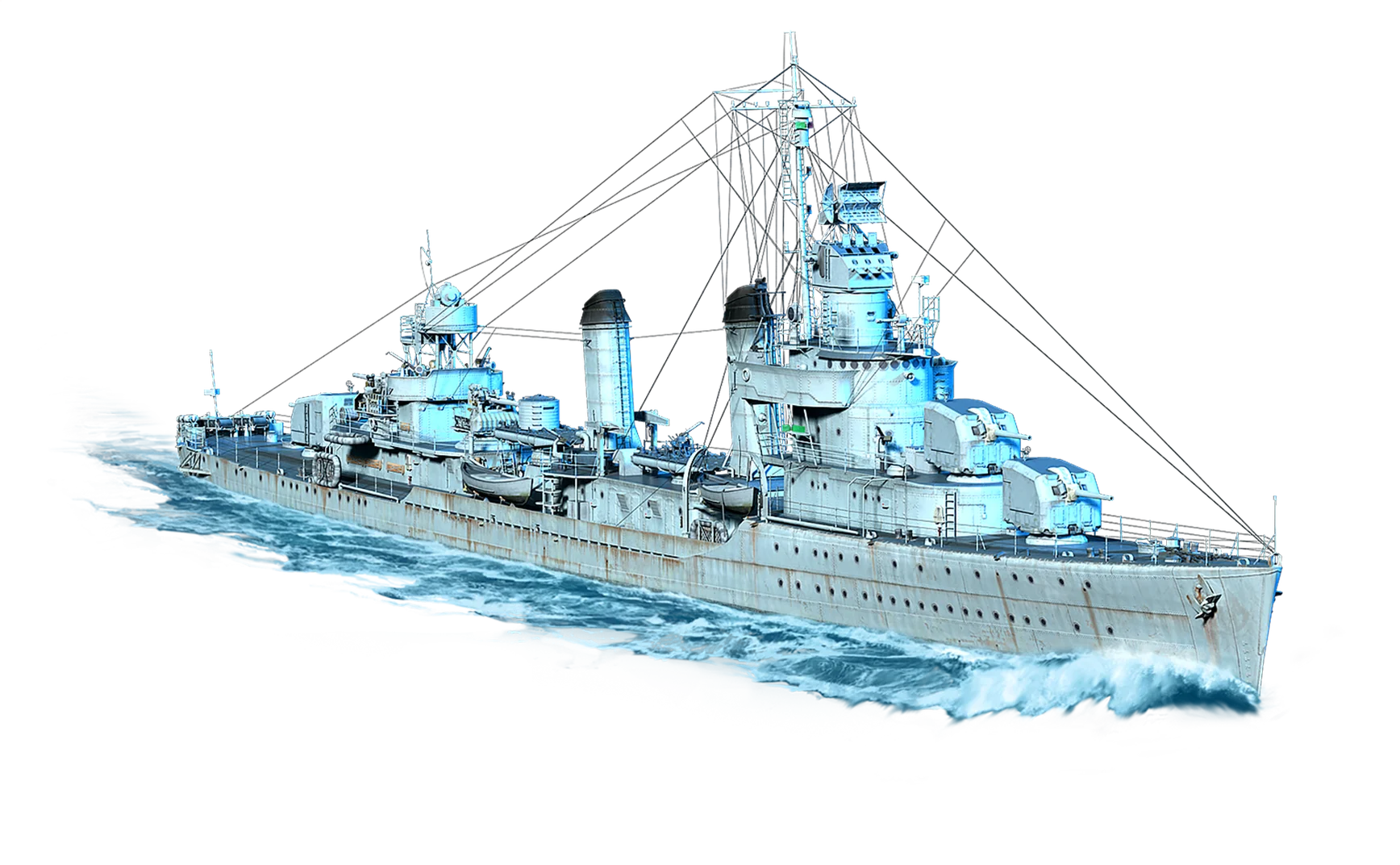Do you like the Ship Page updates?We need your opinion – are these changes we've made to these pages an improvement?
Want to hide ads?
Become a Supporting Member
Become a Supporting Member
Tech Tree
American DestroyersII Wickes
III Clemson
IV Farragut
V Mahan
VI Benson
VII Fletcher
VIII A. M. Sumner
Overview
Jump to
16Builds Submitted
1Review Submitted
12Records Submitted
Aug 2020Added to WoWS Builds
Introduction to the Benson Class Destroyer
The Benson-class destroyers were a series of 30 naval ships built for the United States Navy during World War II. They were designed in the late 1930s and were a significant step forward in destroyer design for the US Navy. These vessels served with dis...
Benson Stats
Survivability
Armament
Air Defense
Maneuverability
Detectability
Benson Records
damage203058
PTLs_Soldier
Mar 2022damage182735
armykidrus
Sep 2021damage176717
Fred5159
Jul 2021damage59872
danpsxmac
Jun 2021base_xp4703
tony214
Oct 2021base_xp4541
FocusedLobuz
Nov 2022base_xp4262
masanagachinjufu
Feb 2022base_xp3911
AngelOfFirepower
Aug 2021base_xp3663
Hoekrates
Jul 2021base_xp3500
Hoekrates
Jul 2021Benson Reviews
Power3.00
Fun3.00
Learning Curve3.00
Skill Ceiling4.00
Utility4.00
SGT Spartan 256
Power3
Fun3
Learning Curve3
Skill Ceiling4
Utility4
Peer Comparison
Tier VI DestroyersBenson Builds
Community submitted commander builds5
a good chance not to be deleted so fastMccarthysteven42
Oct 20203
Benson (Chaser)RedWineLover17
Feb 20212
Agility Benson (concealment)xIr0nyyy
Dec 20202
Brawl Season 7Netztramp
Feb 20232
Agility Benson (Distraction)xIr0nyyy
Dec 20202
Benson Torp or GunsFusion_Estelar
Mar 20221
Benson Gun Traversecleverawkwardstairs
Feb 20211
Gunboat BensonBlueLeader135
Apr 20221
Totally a torpedo boatDr cringe6750
Jun 20221
Benson HMAaudi_noctem
Aug 2024Benson Consumables
Slot 1
Damage Control Party
- Charges
- ∞
- Cooldown
- 40 s
- Duration
- 5 s
Slot 2
Smoke Generator
- Charges
- 2
- Cooldown
- 240 s
- Duration
- 27 s
- Dispersion Time
- 121.0 s
Slot 3
Engine Boost
- Charges
- 2
- Cooldown
- 180 s
- Duration
- 120 s
- Speed Boost
- 8%
Want to hide ads?
Become a Supporting Member
Become a Supporting Member
Want to hide ads?
Become a Supporting Member
Become a Supporting Member
